 Electronic Arts introduces players into a new age of Battlefield, where warfare is exchanged for high-speed and adrenaline-filled tales of crime and corruption through the eyes of the police and criminals. But is Hardline up to the task to keep the Battlefield name clear? Or does it flatline?
Electronic Arts introduces players into a new age of Battlefield, where warfare is exchanged for high-speed and adrenaline-filled tales of crime and corruption through the eyes of the police and criminals. But is Hardline up to the task to keep the Battlefield name clear? Or does it flatline?
*NOTE: Due to technical disparities between certain versions of the game because of hardware limitations and differences, this review is mostly applicable to the version that has been reviewed. The PlayStation 3 and Xbox 360 version of Battlefield: Hardline do not offer the full 64-player experience of its current-gen and PC counterparts. Experiences may vary per platform.
 Battlefield: Hardline takes the franchise in a new direction by ditching its military setting in favour of a TV-inspired cop drama that takes its cues from popular shows such as Hawaii Five-O, Breaking Bad and other popular crime-related dramas. Hardline tells the story of detective Nick Mendoza, a young detective working through the ranks of the DEA. After an initially rough introduction Mendoza is introduced to his new partner and the hunt for some of the region’s largest drug lords begins. But like in any cop drama, there’s a twist to this tale, and Mendoza soon discovers that not all is well in his department, resulting in a cop vs corrupt cop conflict that might not end well for him and his allies. The story and characters of Hardline are anything but deep and well written, but often these effects seem more than intentional considering the fact that the entire narrative is set-up as a televised cop drama, which are often produced in a similar fashion. The characters are incredibly two-dimensional, but they are written in a fashion that often makes them likeable, rather than creating the one-dimensional military grunts that we’ve often had to deal with in the history of the franchise.
Battlefield: Hardline takes the franchise in a new direction by ditching its military setting in favour of a TV-inspired cop drama that takes its cues from popular shows such as Hawaii Five-O, Breaking Bad and other popular crime-related dramas. Hardline tells the story of detective Nick Mendoza, a young detective working through the ranks of the DEA. After an initially rough introduction Mendoza is introduced to his new partner and the hunt for some of the region’s largest drug lords begins. But like in any cop drama, there’s a twist to this tale, and Mendoza soon discovers that not all is well in his department, resulting in a cop vs corrupt cop conflict that might not end well for him and his allies. The story and characters of Hardline are anything but deep and well written, but often these effects seem more than intentional considering the fact that the entire narrative is set-up as a televised cop drama, which are often produced in a similar fashion. The characters are incredibly two-dimensional, but they are written in a fashion that often makes them likeable, rather than creating the one-dimensional military grunts that we’ve often had to deal with in the history of the franchise.
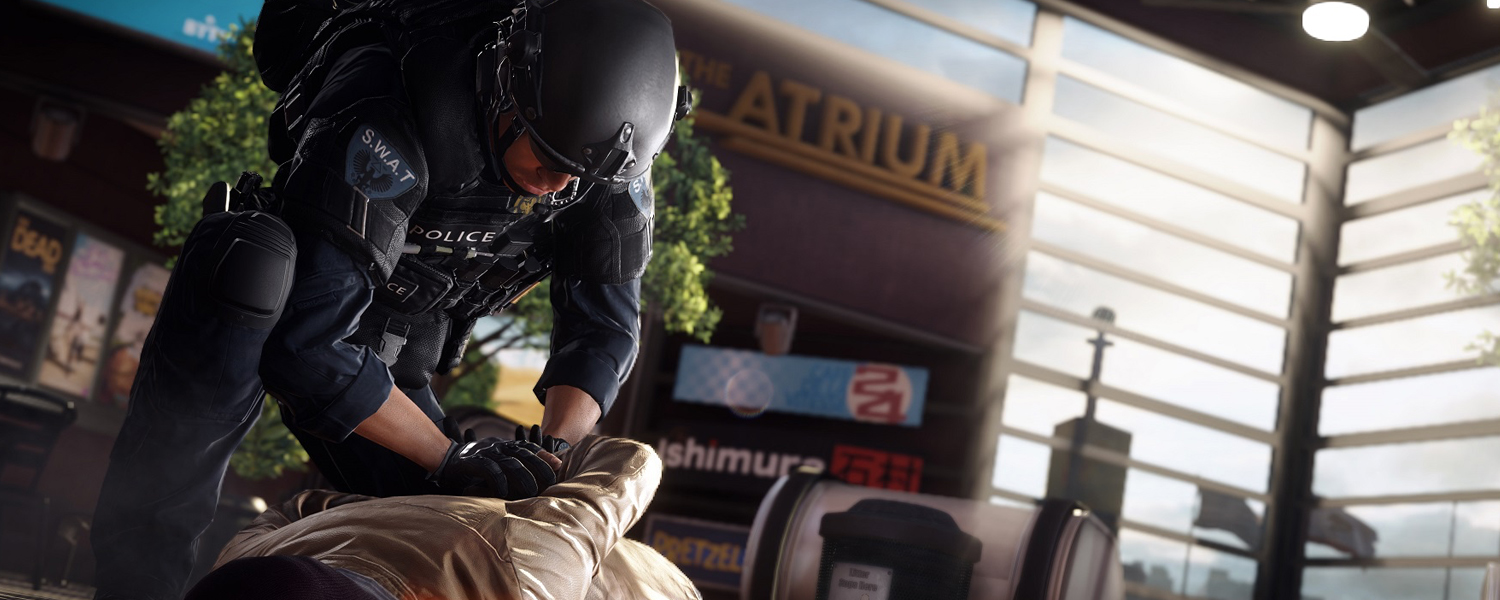 Rather than spreading the narrative out through the game as a three-act story the game gives each mission the structure of a TV episode, which creates a dynamic where the campaign is easily played in short sessions due to the fact that each mission is set up as a self-sustaining narrative. There are some problems with this narrative as playing through the entire game in larger sessions can make this formula a bit stale as some of the missions simply aren’t that long and the interruptions in between chapters dials the flow of the story back quite a bit.
Rather than spreading the narrative out through the game as a three-act story the game gives each mission the structure of a TV episode, which creates a dynamic where the campaign is easily played in short sessions due to the fact that each mission is set up as a self-sustaining narrative. There are some problems with this narrative as playing through the entire game in larger sessions can make this formula a bit stale as some of the missions simply aren’t that long and the interruptions in between chapters dials the flow of the story back quite a bit.
Even though the game is set up in episodic context, the main narrative of the game can still be seen as a traditional three-act story. The opening chapters of the game feel like obvious nods to modern cop dramas when it comes to the tone, but it doesn’t take long until the story treads into Bad Boys territory by injecting some adrenaline and heading into some ridiculous car chases and action sequences, though these are over-the-top in the sense that they still seem enjoyable, and fit the formula that the writing of the story had adapted so far. throughout its first and second acts the game tends to stay in these territories, but once we head into the third act the game often falls back heavily on the set piece formula that the main franchise had adapted. Some of the final sequences headed towards the finale are pretty absurd, with the penultimate chapter of the game treading into gravity-defying territory that even when compared to earlier games seems completely nonsensical. The finale has a lot to be desired as well due to the fact that the pacing decelerates quite heavily and showcases twists and turns that are not only completely insistent with the tones and characters of the game, but seem like an unlockable alternate ending that ignores the little character development the narrative had showcased so far.
Whilst Hardline starts out as a fun side-adventure into new territory, the narrative simply doesn’t have the consistency to keep itself to a singular tone and a (kind of) grounded story, which results in a third act that falls back into old habits and escalates in a nowadays obligatory explosive finale that makes neither nor sense, nor is it a satisfying conclusion to a story that had a chance to be decent on its own. The problem is that whilst Hardline wants to be its own thing entirely at times, it more than often goes out of its way to remind the player that it’s a Battlefield game. Heat and Miami Vice were often the most prominent takes of inspiration in EA’s marketing for Hardline, but Bad Boys and Lethal Weapon seem more prominent in its writing.
 Ever since the introduction of DICE’s Frostbite engine the Battlefield franchise has been known for providing stellar visual presentations that truly showcase both the beauty and chaos of the battlefield. With its first non-DICE title, do the graphical aspects of Battlefield Hardline match up to the standard that had been set by Battlefield 4 just two years ago? Whilst there are certain aspects of Hardline that may seem like an improvement, there are certain aspects of its visual department that may seem a bit of a step back in comparison. Firstly I’ll talk about the environments, and of course its assets/contents. Textures in general seem to be well detailed, though in the game’s more natural environments certain textures seem a bit too muddy to match up to its urban counterparts. Shrubbery, trees and other natural elements seem to suffer from the same issue, and often look overly simplified when compared to the non-natural elements of the level designs in both the single-player and the multiplayer campaign.
Ever since the introduction of DICE’s Frostbite engine the Battlefield franchise has been known for providing stellar visual presentations that truly showcase both the beauty and chaos of the battlefield. With its first non-DICE title, do the graphical aspects of Battlefield Hardline match up to the standard that had been set by Battlefield 4 just two years ago? Whilst there are certain aspects of Hardline that may seem like an improvement, there are certain aspects of its visual department that may seem a bit of a step back in comparison. Firstly I’ll talk about the environments, and of course its assets/contents. Textures in general seem to be well detailed, though in the game’s more natural environments certain textures seem a bit too muddy to match up to its urban counterparts. Shrubbery, trees and other natural elements seem to suffer from the same issue, and often look overly simplified when compared to the non-natural elements of the level designs in both the single-player and the multiplayer campaign.
These elements seem to fare much better in dimly lit situations, and with the right lighting in nighttime sequences these issues seem a lot less apparent unless you’re actively searching for these visual imperfections. However, in broad daylight these issues can be quite distracting for certain returning players, as it is a step back from Battlefield 4, despite this being a standalone spin-off. The game does shine when it comes to structures and non-natural elements such as concrete, glass, and whatever materials you’ll find in modern urban environments. Throughout my sessions I was quite impressed by the level of detail and the architectural design of certain locations that I had take a moment and admire Visceral’s impressive design work on these locations, which shines through in both the campaign and multiplayer sections of the game. Map designs seem to shine through in a similar manner, though some seem to be a little unbalanced when confronted with certain gameplay modes that have larger amounts of players running around.
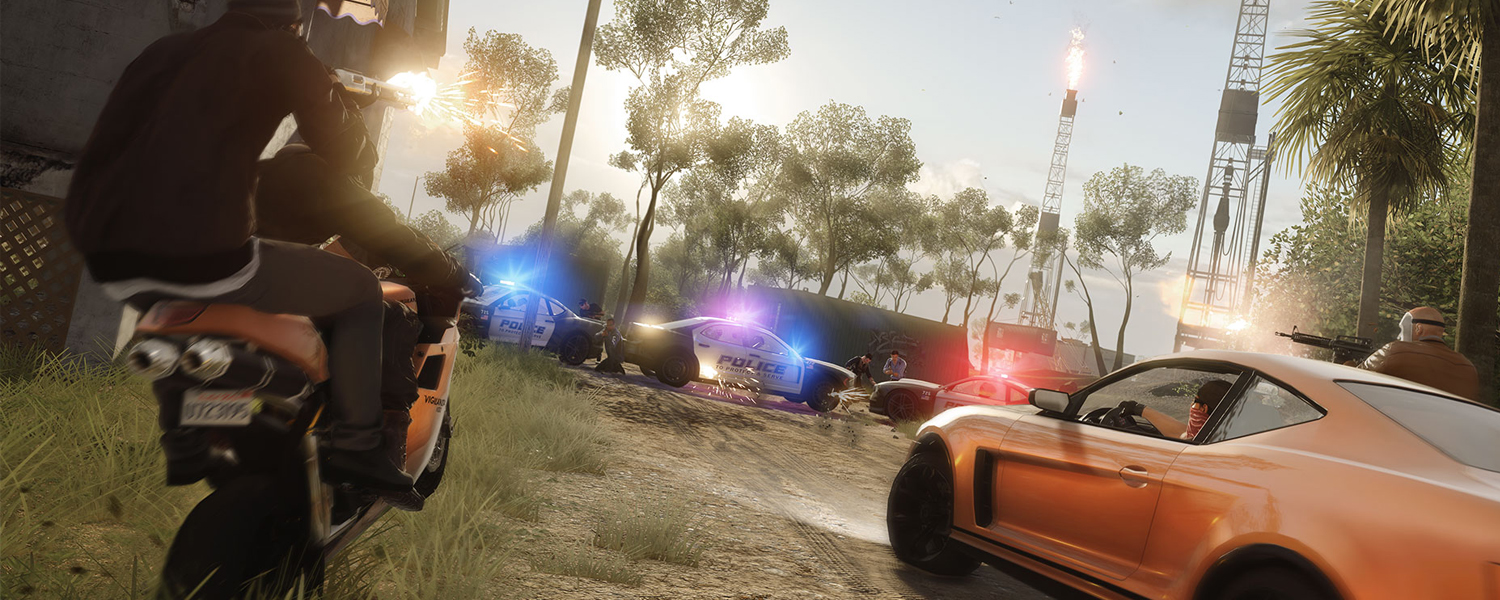 The most prominent visual issue I encountered throughout the game was the quite apart aliasing issue, which often left the edges of characters and objects jagged in quite a distracting manner, which usually compromised what was often a decent visual presentation. However, the models of these characters and objects are usually quite well detailed and the texture work by Visceral on certain objects scattered throughout the world is pretty impressive. This isn’t limited to the larger set-pieces you’ll encounter, but the smaller details in the more enclosed levels are pretty much the best showcase of some of the modelling talent going on at Visceral, which sometimes goes unappreciated due to the less-than-ideal circumstances of some of the game’s less-finer moments in multiplayer.
The most prominent visual issue I encountered throughout the game was the quite apart aliasing issue, which often left the edges of characters and objects jagged in quite a distracting manner, which usually compromised what was often a decent visual presentation. However, the models of these characters and objects are usually quite well detailed and the texture work by Visceral on certain objects scattered throughout the world is pretty impressive. This isn’t limited to the larger set-pieces you’ll encounter, but the smaller details in the more enclosed levels are pretty much the best showcase of some of the modelling talent going on at Visceral, which sometimes goes unappreciated due to the less-than-ideal circumstances of some of the game’s less-finer moments in multiplayer.
Many of the issues are more present in the multiplayer, and te single-player campaign arguably is much more of a visually impressive product than its online counterpart. Whilst the game never reaches Battlefield 4 levels of fidelity, the game can stand on its own well enough, though its nighttime levels are pretty much the better half of the game due to the lighting situations that illuminate the game world. The larger the battlefield, the more Hardline suffers, and the more closed off areas of Hardline seem to be the much more polished aspects of the game, which seems to give the idea that the work on larger areas simply wasn’t a priority when it came to the IQ of the game, which is a shame considering the design seems to fare much better than its actual presentation.
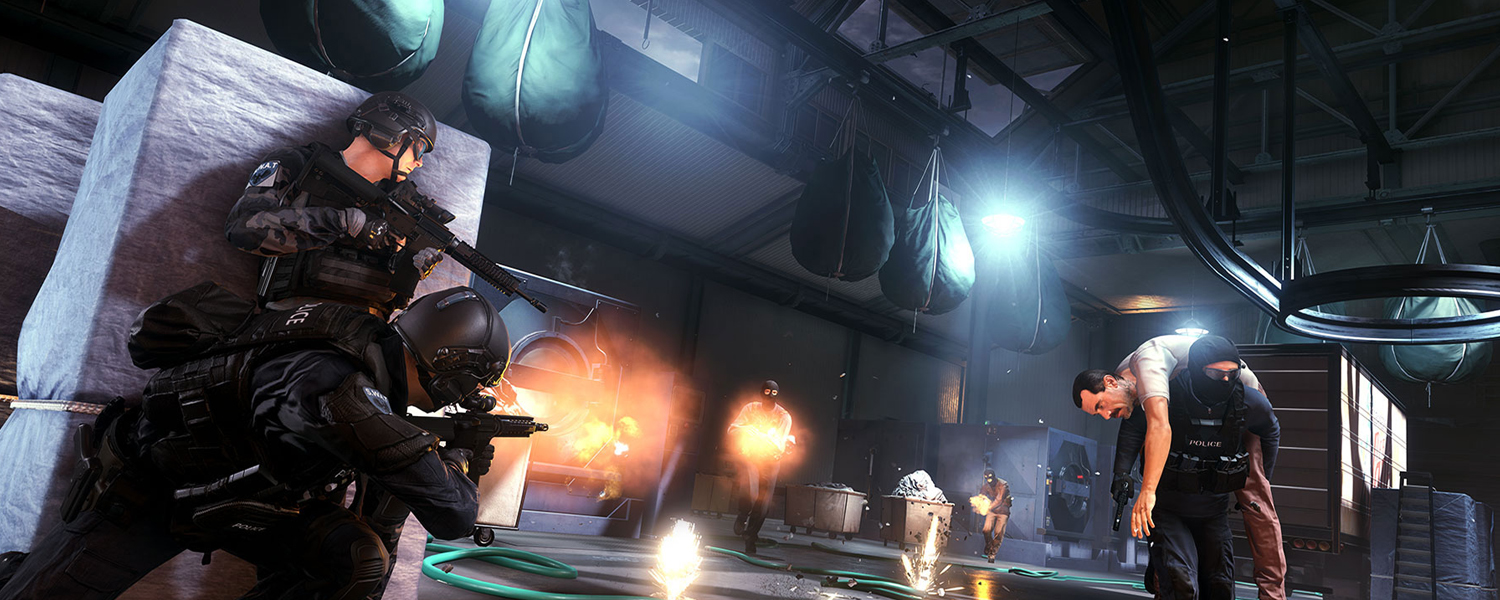
The PlayStation®4 edition of Battlefield: Hardline runs at a resolution of 900p, aiming at a framerate of 60fps, which consistently dips into the mid to lower 50’s, with some heavier drops in the more hectic situations that take place in multiplayer. The singleplayer campaign features a combination of both 60fps-targetted gameplay and certain 30fps cinematics, which can make for some jarring transitions. This is due to the fact that there are no camera cuts or or any other transitions in-between these sequences. As said earlier the multiplayer suffers the heaviest from these drops, and whilst the framerate usually stays above 50fps, the result is pretty noticeable in quite a few scenarios, which is questionable since the franchise has maintained a similar framerate with much higher visual fidelity, which quite frankly questions the optimisation of the game.
 Hardline is a pretty mixed product when you’re trying to pin down what kind of game it actually is. The campaign is a mix of existing and new concepts, the most apparent addition being its high reliance on stealth. There are quite a few sequences that will have you pass or take down enemies by sneaking past them and arresting or knocking them out, or in some cases just ignore them entirely. After using your radar to scope out the nearby area your mini map will give you the locations of your enemies, along with their active line of sights, which gives you a clear idea of where you can go. The stealth arsenal isn’t that diverse, as basically crouching and silenced weapons are the norm when sneaking throughout, but the addition of more non-lethal reactions to your enemies is quite a refreshing one. Rather than taking the life of every single enemy you’ll be able to apprehend them and take them into custody(just knocking them out seems to suffice as well.) When approaching an enemy whilst in stealth your most likely response would be to hit them from behind, and whilst this is an effective routine, there is also a more rewarding one. When approaching an enemy you’re be able to effectively apprehend your enemies and approach them to arrest them. To do this, you’ll have to keep your aim on them following your initial introduction, and if you’re in a situation where you’ve got multiple suspects the situation could still go south if your partner isn’t present. Whilst the mechanic in question is quite effective and a fun addition your enemies will often seem way to eager to give up, and more variety in responses would’ve been a more refreshing take on this great new mechanic, which is preferable due to the fact that arresting enemies simply give you more reward than killing them does.
Hardline is a pretty mixed product when you’re trying to pin down what kind of game it actually is. The campaign is a mix of existing and new concepts, the most apparent addition being its high reliance on stealth. There are quite a few sequences that will have you pass or take down enemies by sneaking past them and arresting or knocking them out, or in some cases just ignore them entirely. After using your radar to scope out the nearby area your mini map will give you the locations of your enemies, along with their active line of sights, which gives you a clear idea of where you can go. The stealth arsenal isn’t that diverse, as basically crouching and silenced weapons are the norm when sneaking throughout, but the addition of more non-lethal reactions to your enemies is quite a refreshing one. Rather than taking the life of every single enemy you’ll be able to apprehend them and take them into custody(just knocking them out seems to suffice as well.) When approaching an enemy whilst in stealth your most likely response would be to hit them from behind, and whilst this is an effective routine, there is also a more rewarding one. When approaching an enemy you’re be able to effectively apprehend your enemies and approach them to arrest them. To do this, you’ll have to keep your aim on them following your initial introduction, and if you’re in a situation where you’ve got multiple suspects the situation could still go south if your partner isn’t present. Whilst the mechanic in question is quite effective and a fun addition your enemies will often seem way to eager to give up, and more variety in responses would’ve been a more refreshing take on this great new mechanic, which is preferable due to the fact that arresting enemies simply give you more reward than killing them does.
Stealth is an effective option 9 out of 10 times, though you’ll often be presented with situations where you could go either way, and going in guns blazing can be as effective. On higher difficulties stealth does seem to be a wiser option unless you’re that well familiar with the style of gameplay, as the cops in Hardline seem way less bulletproof than they do in the classic entries. This of course is a matter of difficulty settings, but the point here is that getting noticed during stealth and/or going in head-on can have quite the consequences if you’re not prepared to face the results of your actions. Another change on this front would be the adjusted arsenal, which gives us a pistol as our primary weapon, rather than its original place as a side-arm as we most often see in most modern day shooters. Of course there are quite a variety of unlockable rifles and such to use as our side-arm, but the pistol does seem to be the most flexible when it comes to acting in both stealthy and hectic situations. Each weapon in both single and multiplayer can be retrofitted with quite a diverse selection of attachments that you can adjust accordingly. One weapon fits all in certain situations, and I often found myself switching the attachments on my carbine to better support my stealth approach, which often helped my save my own behind after making mistakes.
Cars have also been given a bigger spotlight in Hardline, and both the singleplayer and multiplayer feature a prominent push towards high-speed chases involving cops and robbers. Battlefield’s handling model has always been more practical when it came to trucks, tanks and other larger vehicles, but the handling method often feels too stiff when it comes to the game’s driving sections, which involve more traditional vehicles. The single-player doesn’t involve much strategy or skill when it comes to driving, and the almost on-rails approach to these sections is pretty boring due to the fact that you don’t have the situational freedom that you’re given on foot. The multiplayer obviously drops this problem, though the sheer weight and physics of the driving mechanic is pretty disappointing considering they are so prominently featured in the game as a whole.
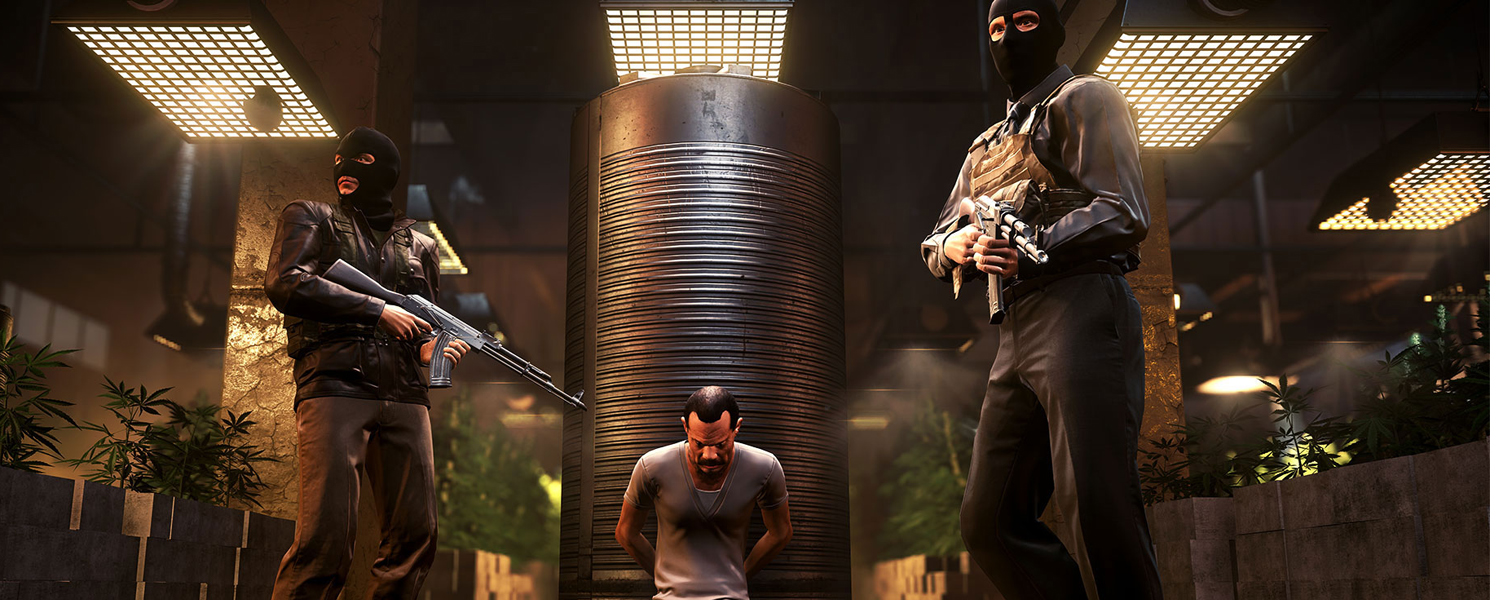 As always the multiplayer portion of this Battlefield title holds the largest amount of content for us to play around with, and Hardline gives us a mix of old and new, which works out in a variety of ways. First off we’ve got classic conquest, which has players fight for control over specific points on the map to stop their team’s ticket count from depleting. Due to the variety of map designs in Hardline this mode seems to work better on certain maps than others, but this isn’t the only problem that looms over conquest. The inclusion of the mode is pretty much a given considering it’s a Battlefield title, but it’s also why it feels a little out of place next to the other game modes. Territorial capture simply doesn’t seem to fit in with the concept of the game, and forms a thematic clash between itself and the other game modes. It works on a technical leve, but not much else due to the fact that it stands out.
As always the multiplayer portion of this Battlefield title holds the largest amount of content for us to play around with, and Hardline gives us a mix of old and new, which works out in a variety of ways. First off we’ve got classic conquest, which has players fight for control over specific points on the map to stop their team’s ticket count from depleting. Due to the variety of map designs in Hardline this mode seems to work better on certain maps than others, but this isn’t the only problem that looms over conquest. The inclusion of the mode is pretty much a given considering it’s a Battlefield title, but it’s also why it feels a little out of place next to the other game modes. Territorial capture simply doesn’t seem to fit in with the concept of the game, and forms a thematic clash between itself and the other game modes. It works on a technical leve, but not much else due to the fact that it stands out.
Most of Hardline’s game modes are entirely new to the franchise, and the list consists of; Blood Money (objective based capture and retrieve), Crosshair (VIP escort), Heist (an objective-based mode comparable to Rush), Hotwire (a vehicle-based versus mode), Rescue (hostage rescue) and classic Team Deathmatch, which speaks for itself. The sheer variety in modes is pretty decent, though certain modes like Blood Money and Hotwire are often prone to fatigue due to repetition. Hotwire seems to be the biggest offender in this regard, as it has players capture vehicles on the map followed by driving them around for as long as possible to gain points. Battlefield is always as hectic as the players make it, but soon you’ll probably be finding yourself driving around in circles capturing points with little else to do. Blood Money is a much slighter offender of this issue, as it’s also a concept that really relies on players to actually make it fun.
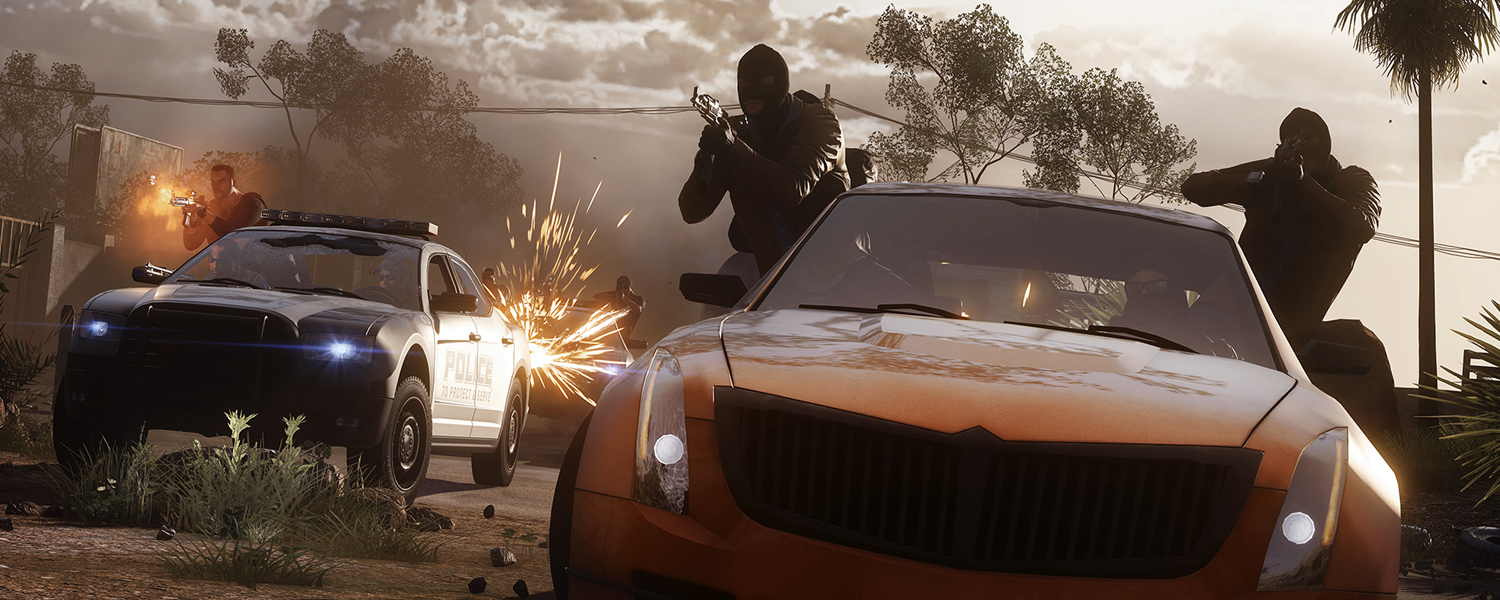
The multiplayer unlock system has been drastically altered, as players will no longer be able to unlock everything by experience. Rather than actually unlocking weapons and gear, you’ll be buying your loadouts with the cash you earn in multiplayer. Money has basically replaced experience in this regard, though you’ll soon enough be earning more than enough to purchase your ideal gear for action. Each of the classes has been renamed to match the style of the subject in question, but the primary use of each remains. The only problematic issue with classes is the fact that the engineer may seem a bit useless in certain situations, as there is a much lesser need of repairs due to the fact that much of the variation in vehicles has been simplified to cars and such, with helicopters being in the mix in lesser numbers.


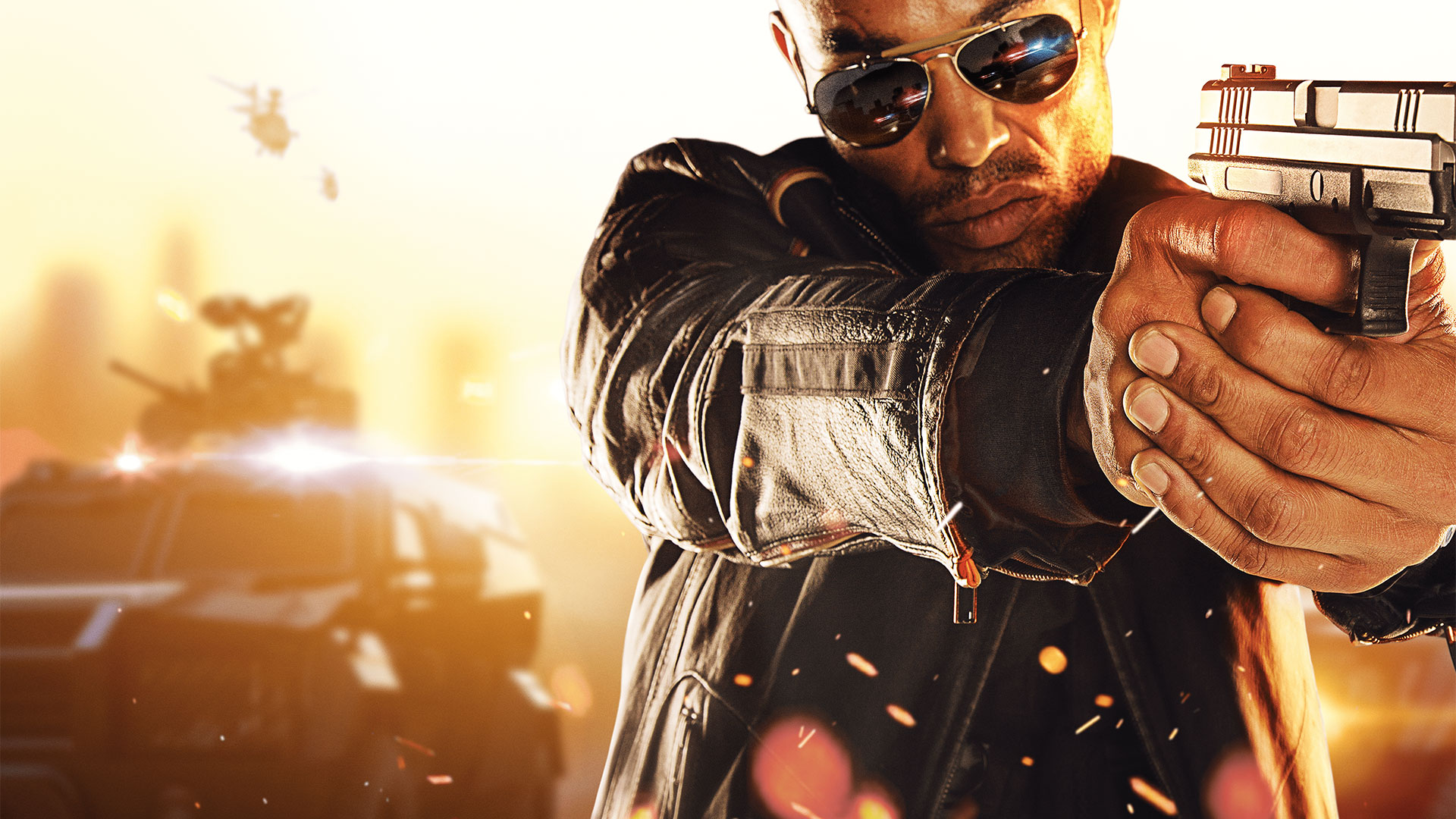
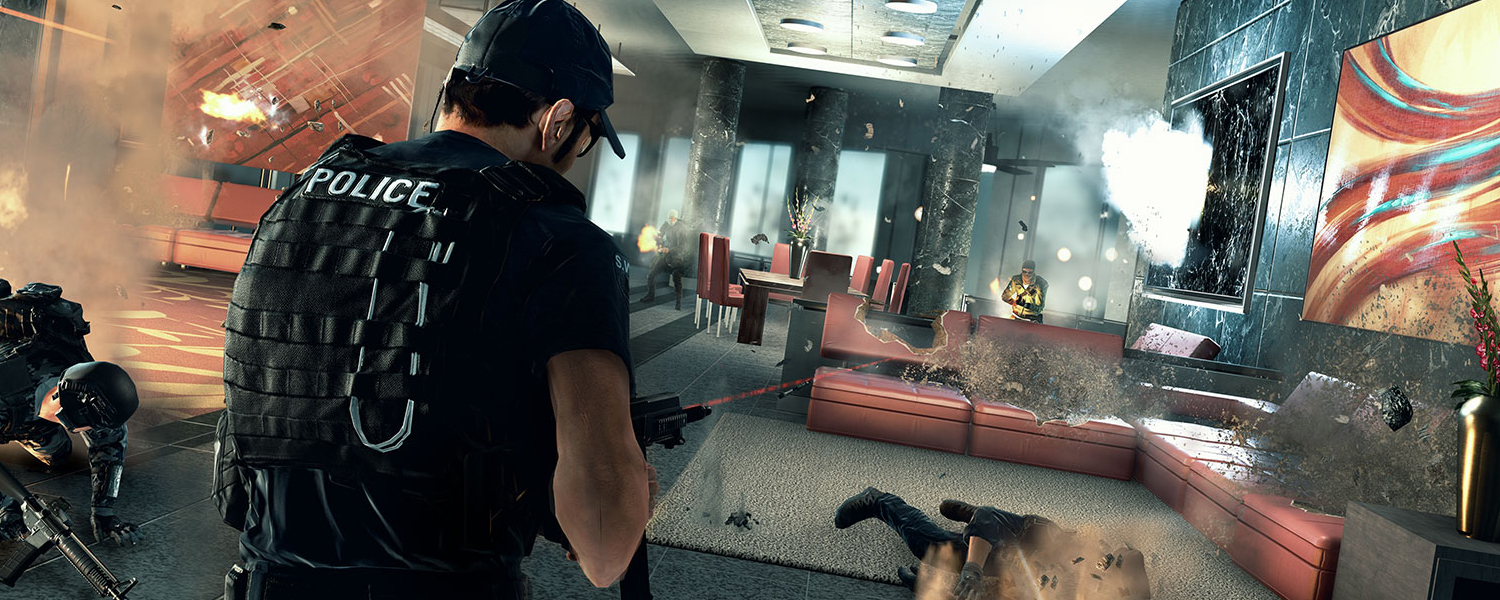
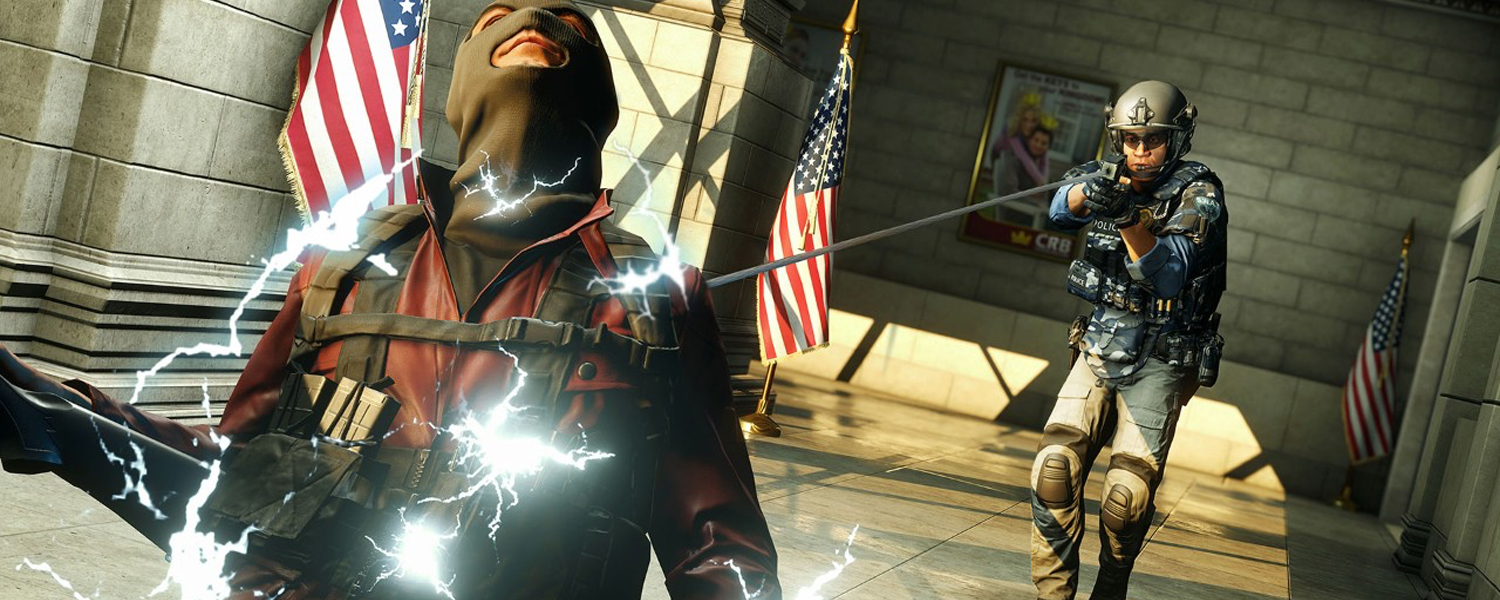
 Battlefield: Hardline offers both returning and new players a slightly more fresh take on the classic Battlefield formula. But where the game delves into new territory, it often returns to the classic formula after getting cold feet. The strongest points of Hardline are when the game tries to be something different, but the fallbacks to old ways are where the game keeps itself from being great, rather than just good.
Battlefield: Hardline offers both returning and new players a slightly more fresh take on the classic Battlefield formula. But where the game delves into new territory, it often returns to the classic formula after getting cold feet. The strongest points of Hardline are when the game tries to be something different, but the fallbacks to old ways are where the game keeps itself from being great, rather than just good.